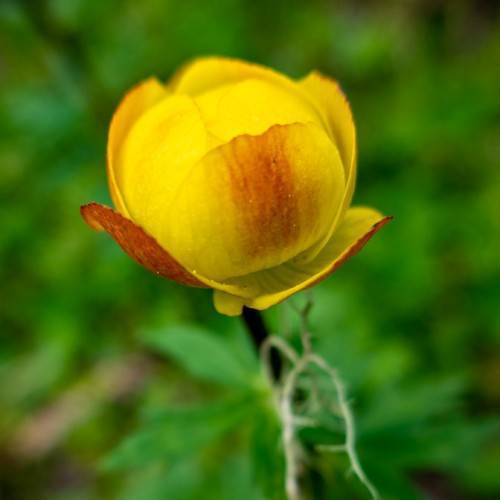
globe flower
Trollius europaeus
Also Known As - common European globeflowerCycle:
Herbaceous Perennial
Watering:
Frequent
Hardiness Zone:
3 - 6
Flowers:
Flowers In Spring
Sun:
Deep shade, Filtered shade, Part sun/part shade
Fruits:
Fruits In Summer Ready In Summer
Leaf:
Yes
Growth Rate:
High
Maintenance:
Moderate
Drought Tolerant:
Yes
Salt Tolerant:
Yes
Care Level:
Medium
watering
When watering Globe Flower (Trollius europaeus), be sure to provide enough water to keep the soil moist, but not soggy. Water the plant well when the soil becomes dry to a depth of 2-3 inches. Depending on the weather and season, it may need to be watered once a week or more often. During a long dry period, the plant will likely need more frequent irrigation. To avoid foliar disease, water in the morning so the foliage has time to dry during the day. On hot summer days, it may also help to give Globe Flower a light misting.
sunlight
The globe flower (Trollius europaeus) is a perennial flower that thrives in full sun and prefers moist soil. It is suitable for USDA Hardiness Zones 3 through 8. For optimal growth, globe flower plants should be placed in a location that receives at least 6 hours of direct sunlight per day. They can also tolerate some partial shade, provided they receive a minimum of 4 to 6 hours of direct sunlight each day. During periods of extreme heat or drought, however, globe flowers may benefit from some afternoon shade. Globe flowers bloom best when exposed to direct sunlight for most of the day, from late spring through early fall. In northern climates, direct sunlight may not be strong enough during the winter to allow globe flowers to bloom. In addition, globe flowers need regular watering throughout the growing season to keep the soil moist, but avoid soil that is soggy or overly wet.
pruning
Globe flowers (Trollius europaeus) should be pruned once a year, typically in early spring before new growth emerges. This ensures the best possible flower production and helps direct new growth in the desired direction. Pruning should be done with sharp pruners and can involve removing any dead or damaged stems, as well as selectively shaping, shortening, and thinning out growth to encourage a more attractive shape and denser flower production. When pruning, aim to remove no more than 1-third of the total plant canopy. During the growing season, deadheading (removing spent flowers) may be necessary to promote further blooming.
